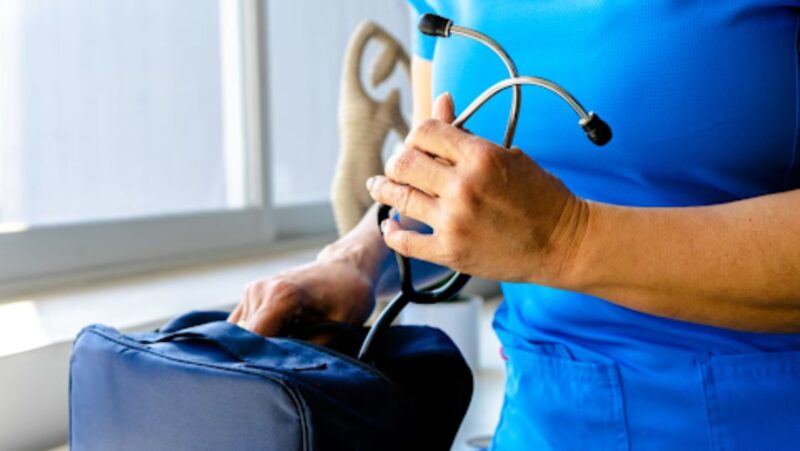
When it comes to understanding our health, what lies beneath the surface tells a more compelling story than any number on a scale. Fat distribution within the body plays a crucial role in determining overall health risks, particularly when it comes to visceral fat that surrounds vital organs.
A comprehensive body fat scan using modern technology can reveal detailed insights about fat distribution, muscle mass, and potential health risks that traditional weight measurements simply cannot detect. Using a professional body fat scan machine provides precise measurements of both visible subcutaneous fat and hidden visceral fat, offering a clearer picture of one’s health status.
The implications of body composition extend far beyond appearance. Recent research indicates that individuals with higher levels of fat around their muscles face increased risks of heart disease and hospitalization, regardless of their body mass index. This finding emphasizes the importance of looking beyond traditional weight metrics to assess health risks accurately.
Key Takeaways
- Advanced body composition analysis reveals hidden health risks that scales cannot detect
- Fat distribution patterns impact cardiovascular health more significantly than overall weight
- Regular body fat measurements provide essential data for tracking health improvements
Understanding Body Fat and Its Types
Body fat serves multiple critical functions beyond simple energy storage. Different types of fat interact uniquely with the body’s systems, affecting health outcomes and metabolic processes.
The Composition and Functions of Body Fat
White fat cells store energy and release hormones that regulate metabolism. These cells expand and contract based on caloric intake and expenditure.
Brown fat generates heat and burns calories to maintain body temperature. This specialized fat becomes more active during cold exposure and exercise.

Subcutaneous fat lies directly under the skin, providing insulation and cushioning. This type typically poses fewer health risks than other fat deposits.
Visceral fat wraps around organs and produces stress hormones like cortisol. High levels of visceral fat increase the risk of metabolic disorders and insulin resistance.
Factors Influencing Fat Distribution
Genetics play a significant role in determining where fat accumulates. Some people naturally store more fat in specific areas regardless of diet or exercise habits.
Physical activity affects fat distribution by promoting muscle development and increasing metabolic rate. Regular exercise helps reduce visceral fat even when total body weight remains stable.
Hormonal changes influence fat storage patterns. Stress, age, and sex hormones can shift fat distribution between subcutaneous and visceral deposits.
Diet quality impacts fat accumulation. Foods high in refined sugars tend to increase visceral fat, while protein-rich meals support healthy fat metabolism.
The Role of Body Scanning in Health Assessment
Modern body scanning technologies offer precise measurements of body composition, revealing crucial health indicators beyond traditional weight and BMI measurements. These advanced tools provide detailed insights into fat distribution, muscle mass, and bone density.
Advanced Techniques for Body Composition Analysis
Dual-energy X-ray absorptiometry (DEXA) stands as the gold standard for body composition assessment. This technology measures three key components: fat mass, lean tissue, and bone mineral density.
DEXA scans can identify specific areas of fat accumulation, particularly dangerous visceral fat in the abdominal region. The scan provides a detailed regional analysis, showing fat distribution patterns throughout the body.

Body scanning techniques surpass traditional BMI calculations by offering precise measurements of muscle-to-fat ratios. This information proves invaluable for athletes and fitness enthusiasts tracking their progress.
Interpreting Scan Results and Health Indicators
Scan results provide detailed metrics that help identify potential health risks. A high percentage of abdominal fat can signal an increased risk for metabolic disorders and cardiovascular disease.
The analysis includes vital measurements:
- Body fat percentage by region
- Lean muscle mass distribution
- Bone density readings
- Visceral fat levels
Healthcare professionals use these measurements to create targeted treatment plans. A patient’s waist circumference, combined with detailed body composition data, helps determine specific dietary and exercise recommendations.
Scan results enable medical practitioners to monitor changes in body composition over time. This tracking helps assess the effectiveness of lifestyle interventions and medical treatments.
Conclusion
Modern body composition scanning technology provides detailed insights beyond basic weight measurements. DEXA scans reveal precise data about fat distribution, muscle mass, and bone density – essential metrics for understanding metabolic health and fitness progress.
These comprehensive measurements enable healthcare providers and individuals to make informed decisions about nutrition and exercise strategies. Regular body composition monitoring through advanced scanning helps track meaningful changes while maintaining a focus on health rather than just numbers on a scale.












